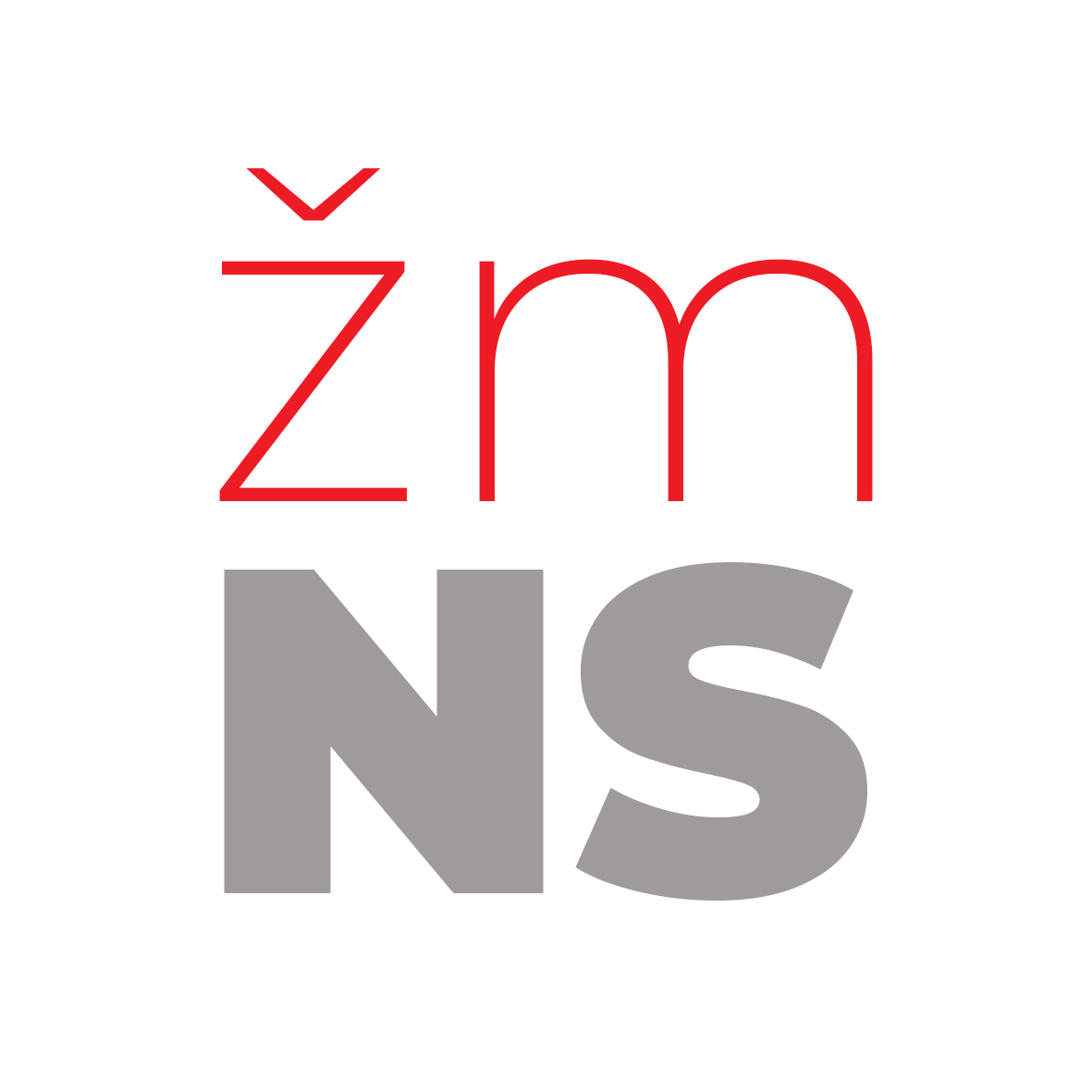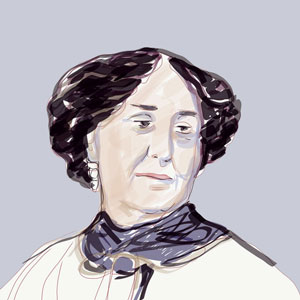
Eustahija Arsić (1776-1843) was the first Serbian female writer to have her books printed. She was also the first woman to work with the Matica srpska foundation and eventually become its first female member. She was a proponent of the Age of Enlightenment, and particularly vocal on the topic of women’s right to education. She promoted the endowment of Serbian and Romanian educational and religious institutions, as well as the Matica srpska foundation itself. Her writings are included in The Anthology of Olden Serbian Poetry by M. Leskovac.
Judita Horovic (1787-1857) was the first local female independent merchant in the food industry. Hers is the only female name to be found in the records of governing heads of Jewish families in Novi Sad in 1844. She was the first woman to officially submit a proposal for the opening of a women-centered organization in Novi Sad in 1848.
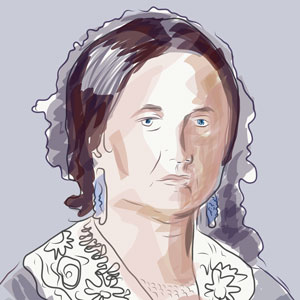
Marija Trandafil (1816-1883) is considered the greatest philanthropist in Serbian history. Her most famous bequest is the “Orphanage of Marija Trandafil for Serbian Orthodox-Christian Children”. The building is now the home of the Matica srpska foundation and the Library of Matica srpska. In addition to helping the needy, she supported the renovation and renewal of many churches in Novi Sad. She established the self-titled foundation for the financial support of Novi Sad’s high school students.
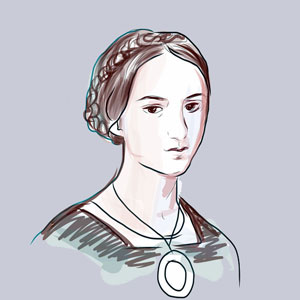
Milica Stojadinović Srpkinja (1828-1878), nicknamed “the fairy of Vrdnik“, was a poet, author, and translator. She was also the first female war correspondent in the region. Her 1862 piece about the bombing of Belgrade entitled “The Heart and the Barricades” was published in the Hungarian Daily Paper the same year. She worked as an associate of Vuk Karadžić, collecting folk proverbs. She published three collections of poetry and two volumes of her diary called In Fruška gora.
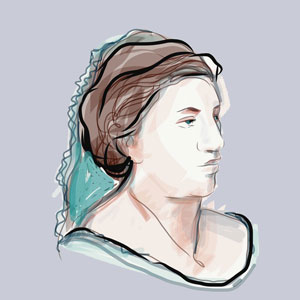
Savka Subotić (1834-1918) was a researcher in the field of traditions concerning the social lives of women. She fought for women’s rights to education, and financial independence, and self-sustainability. After her talk “Woman on the East and the West” at the Science Club in Vienna in 1911, she became the most famous woman of the region. She was the first chairwoman of The Serbian National Women’s Council, The Circle of Serbian Sisters, and The Collective of Serbian Women from Novi Sad.
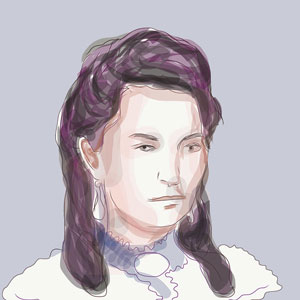
Draga Dejanović (1840-1871) was the first woman in the Balkan region to offer a clearly formulated feminist theory, influenced by national ideas on the topic. She presented her theories in public lectures (“A Couple of Words about Serbian Women”, “To Serbian Mothers”) and in an essay “The Emancipation of Serbian Women” published in 1870. For her, feminism wasn’t just a theory, but a way of life. She promoted a new vision of a financially independent and modern-thinking woman.
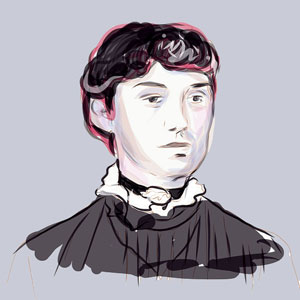
Draga Gavrilović (1854-1917) was the first female novelist in Serbian literature. Her first published work was called “A Young Woman’s Novel”. She is considered the establisher of the category of “women’s fiction” in Serbia, as well as credited as being one of the first Serbian feminists. Alongside novels, she wrote poetry, short stories, humor columns, and opinion pieces. Her work was published in the most significant journals of her time, such as Javor, Orao, Sadašnjost, Neven, and Starmali.
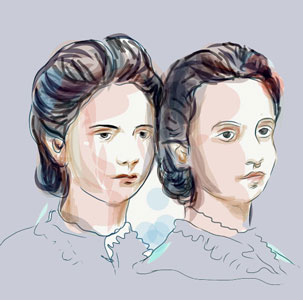
Milica (1854-1881) and Anka (1855-1923) Ninković were the first Serbian feminists with an education in politics, and thus the first feminists joining the political fight. They developed their feminist views within the framework of the socialist movement. They were associates and writers for all socialist papers, as well as translators. Milica is known for translating “Serbia in the East” by Svetozar Marković (from Serbian to Russian).
Adel Nemešanji (1857-1933) was the first woman to hold the position of principal of the Novi Sad Trade School with a teaching program in Hungarian. In 1891 she founded and became chairmen of the “Maria Dorottya” collective that worked on the betterment of the education women receive as well as the organizing of female teachers.
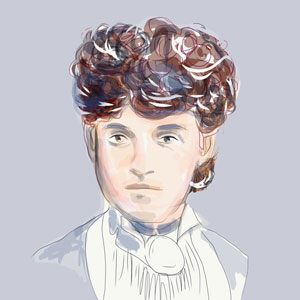
Milica Tomić (1859-1944) writer, journalist and politician, is one of the most important Serbian feminists. From 1911 to 1914, and then again from 1918 to 1921, she was the editor and publisher of the journal called “Woman”. The journal openly discussed political rights of women, advocating an increase in women’s involvement. She was one of the seven women from Vojvodina who were chosen as representatives in the Great Assembly in 1918, after which women quickly gained the legal right to vote.
Mileva Simić (1859-1946) The biography of Mileva Simić from Novi Sad is a surprisingly rich series of important beginnings connected with the entry of women into public space, during the second half of the 19th century, in the Serbian community of Habsburg Hungary. She belonged to the group of the first educated pedagogues who were particularly responsible for creating young female intelligence. She is the first Serbian female author of two textbooks for girls’ schools. In 1902, for her accomplishments in the field of pedagogy and education, along with her work in the field of literature, King Aleksandar Obrenović Ⅰ decorated her with the “Royal Order of the Serbian Crown’’ (Оrdеn Краljеvа Doma Ⅰ stepena sa krunom). Furthermore, in 1925, King Aleksandar Karađorđević also awarded Mileva with the ‘’Order of Saint Sava’’(”Оrden Svetog Save IV stepena), making her one of the rare women whose work was rewarded by both Serbian ruling dynasties. According to her contemporaries, her most significant work „Serbian Folk Songs“ – a collection of two thousand folk songs made by women from Vojvodina, was the reason for her to be included among the members of the ‘’Literary Council of Matica Srpska’’, the most significant cultural and educational institution among the Serbs. Matica Srpska lost Mileva’s work, however, it was published in 2019, based on a copy found in her family’s heritage. Her literary opus (more than a dozen short stories and novellas as well as translations of literary works from the German language) is being rediscovered, and her „children’s plays“ are once again valued as children’s literature. The discovery of Mileva Simić’s pedagogical and literary experience offers new insights into the struggle for women’s recognition in public space.
Jelica Belović Bernadžikovska (1870–1946) was a pedagogue, teacher, and ethnographer, museologist, writer, journalist, and translator. She is the founder of modern ethnology, a collector of national treasures, and the best-known expert on women’s folk weaving and embroidery among the Southern Slavs. She published books and texts under the pseudonyms: “Ljuba T. Daničić’’, ‘’Hele’’, ‘’Jelica’’, ‘’Jele’’, ‘’Jasna’’, ‘’Teta Jelica’’, and ‘’Mlada Gospoja Ana’’. She was born in Osijek where she finished primary and secondary school. After that, she finished Catholic school in a priory in Đakovo, as well as a Teachers’ school in Zagreb. Furthermore, she studied in Vienna and spoke nine different languages. As a teacher, she worked in Zagreb, Ruma, Sarajevo, Banjaluka, Osijek, Mostar, and Novi Sad. She published articles in the fields of literature, pedagogy, psychology, philosophy, and ethnology in numerous magazines, along with short stories, poems, literary essays, and reviews. Some of her noteworthy works include: “Material for the Technological Dictionary of Women’s Handwork” (Građa zа tеhnološki rečnik ženskog ručnog rada), “Serbian Folk Embroidery and Textile Ornamentation’’ (Srpski narodni vez i tekstilna ornamentika), ‘’Croatian Folk Embroidery’’ (Hrvatski narodni vezovi), “The Development of Textile Ornamentation Among Serbs and Croats (O razvitku tetkstilne ornamentike kod Hrvata i Srba), “Album of Serbian Embroidery” (Album srpskih vezova). Thanks to her work, the almanac “Serbian Women‒ Her life and Work, Her Cultural Development and Her Folk Art Until Today” (1913) was published. It represents a cross-section of the history of the intellectual work of more than fifty Serbian women who were writers, philanthropists, intellectuals, artists, teachers, etc. Jelica Belović Bernadžikovska passed away in 1946 in Novi Sad and was buried at ‘’Uspensko groblje’’, where a memorial plaque was placed in 2021.
Mileva Marić Einstein (1875-1948) was educated in Ruma, Novi Sad, Sremska Mitrovica, Šabac and Zagreb – wherever they would allow women. At the age of 19, she went to Zurich, one of the few European cities where women could study. She first enrolled in medical studies, and then in 1896 she transferred to the State Polytechnic School, to study physics and mathematics. She was the only girl in a group of six students and only the fifth woman to be admitted to the physics and mathematics department at all.
Ljudmila Hurbanova (Stara Pazova, 1878-1969) Slovak playwright, actress, and president of the Central Association of Czechoslovak Women in the Kingdom of Serbs, Croats, and Slovenes. She wrote prose and drama texts, and her most significant engagement was in the theater. In the period from 1903 to 1925 she played, directed, and organized numerous amateur theater plays in Stara Pazova and during which time she was running the theater chronicle of Stara Pazova amateurs (1903-1933), which was only published in Slovak language in 1993 as Kronika divadelného ochotníctva v Starej Pazove v rokoch 1903–1933. (Chronicle of theatrical amateurism in Stara Pazova in the years 1903–1933).
Eržika Mičatekova (Kisač 1872–1951) Slovak writer, translator, activist for women’s rights, and president of the Central Association of Czechoslovak Women in the Kingdom of Serbs, Croats, and Slovenes. She wrote prose, and journalistic texts and translated from Serbian, Slovenian and Russian languages. The series of her texts, which she wrote for the newspaper Živena in the period from 1924–1927 under the title Letters from Yugoslavia, is significant for the history of the women’s movement, in which she informed about social events and the work of the association. For her work in the field of enriching folk culture, especially among women in the Slovak community in Vojvodina, she was awarded the Order of St. Sava V class, which she was decorated by King Aleksandar Karađorđević.
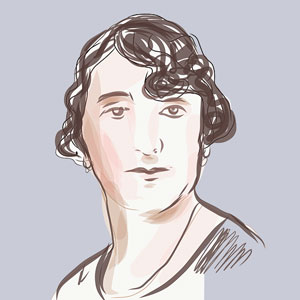
Jelena Kon (1883-1942) was a humanitarian who founded the charity “Crust of Bread” in 1925, as well as a Kindergarten. The organizations were open to the general public, regardless of ethnic or religious affiliation. Thanks to her advocacy, Queen Marija Karađorđević oversaw the building of a new institution, the “Crust of Bread Home”, which still houses a kindergarten today. Jelena Kon was murdered in 1942, during the Novi Sad Raid.
Zuska Medveđova Academic painter Zuska Medveđova was born in a peasant family on October 5, 1897, in Bački Petrovac. She began to show her talent in elementary school, while the general public noticed her for the first time at the exhibition of paintings and handcrafts at the first Slovak festivities in Bački Petrovac, on August 28, 1919. Zuska Medveđova‒” The Self-Taught Peasant Girl ’’ was then presented to the public with her paintings and sculptures. She studied at the school of Professor Ferdinand Engelmüller, the famous landscape painter, at the Royal Academy of Arts and Crafts. She also studied at the Academy of Fine Arts in Prague. She held her first solo exhibition in Petrovac in 1922 in the building where her gallery still exists today. Today, the works of Zuska Medveđova can be found in the Slovak National Gallery in Bratislava, the Bratislava City Gallery, the P.M. Bohunja Gallery in Liptovský Mikuláš, the Njitrjan Gallery, the Slovak National Museum – History Museum in Bratislava, the museum in Martin, Trenčany Museum, Liptovsky Museum, as well as other public and private collections. In 1982, the Bački Petrovac Municipal Assembly awarded Zuska Medveđova the October Award. Zuzka Medveđova passed away in Pezinok (Bratislava) on February 11, 1985. Her artwork in Petrovac is kept by the Zuska Medveđova Gallery, which was opened on July 1, 1989.
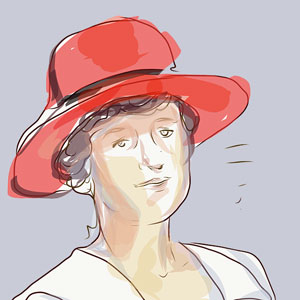
Anica Savić Rebac (1892-1953) is one of the most learned women of the mid-20th century Serbia. She left a remarkable legacy of poetry, essays and translated works. She was a member of a group of Belgrade female intellectuals who founded the Yugoslav Organization of University Educated Women in 1927. She was one of the first women to be accepted into the Yugoslav PEN Club.
Ida Sabo (1915 -2016) was a communist, anti-fascist, partisan, member of the Yugoslav People’s Liberation Fight, the president of the Women’s Antifascist Front, and a women’s liberation fighter. She has numerous accolades and awards to her name. After World War II, she remained an active politician.
Ankica Oprešnik (1919–2005), painter and graphic artist. After completing her undergraduate and master’s studies in Belgrade, she transferred her life and work to Novi Sad, where she became part of the artistic milieu of the city. She integrated the influence of famous professors (Ivan Tabaković, Marko Čelebonović, Milo Milunović, Mihajlo Petrov) into the creation of authentic expression within the framework of intimism, poetic realism, and lyrical expressionism. In the years of general affirmation of Yugoslav graphics, she remains an almost lone example of an artist who dedicated herself to research in the field of visual and poetic possibilities of this technique. From 1952 to 1974, Oprešnikova regularly exhibited at the May Graphics and Color Graphics festivals, and for almost four decades she was closely associated with the Graphic Collective. In 1954, she participated in the Yugoslav selection of the Venice Biennale. She is the winner of the award for graphics at the international exhibition in Lugano, as well as numerous other national and international awards. With her painting and graphic preoccupations, she made a significant contribution to the most advanced artistic aspirations of the second half of the 20th century.
Bogdanka Poznanović (1930- 2013) was one of the founders and members of the editorial board of the Youth Tribune and “Polja” magazine. She was also the editor of the Youth Tribune Salon, an art critic, and a professor at the Academy of Arts in Novi Sad. At the Academy, she founded the first Visual Studio for intermedia research in former Yugoslavia. She developed her own artistic practice which was focused on experimental painting and new artistic practice. Moreover, she was also focused on the interdisciplinary approach, new media, art interventions in public spaces, mail art, installations, and video art. She exhibited her art both independently and at many group exhibitions in Yugoslavia and abroad. She held a retrospective exhibition of her works, at the Museo d’Arte Contemporanea Multimediale d’Europa (Domus Jani, 1990) in Verona.
Judita Šalgo (Novi Sad, 1941-1996) writer. She wrote poetry, prose, and essays, and translated from Hungarian and English. She was the program editor at the Youth Forum and later the editor at the Matica Srpska Publishing Centre. The beginning of her work is connected to the Vojvodina’s neo-avant-garde wave, which shook the Novi Sad literary and artistic scene in the 1960s and 1970s. Language research, experiments in text, genre subversion, and hybrid form have remained permanently inscribed in her literary writing style. She has published three poetry collections, a collection of stories and a collection of essays, as well as two novels.
Katalin Ladik (1942) poet, performer, and actress. She appeared on the Yugoslav art scene for the first time as one of the founders of the Subotica avant-garde group Bosch + Bosch. Her multi-genre experimental work includes literature, poetry and prose, phonic poetry, interpretation of experimental sound compositions and radio games, acting, performances, happenings, actions, and mail art. Katalin Ladik’s performances, as an extension of her female identity, can be classified as subversive feminist practices. She has published 20 poetry collections and one novel. She is the winner of the Lennon Ono Grant for Peace and Courage Award for the Arts 2016.
